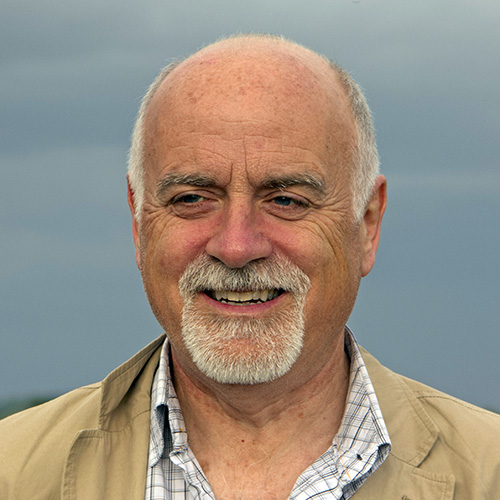
Dr Alan Boyle PhD, BSc, SFHEA.
Senior Lecturer in Geology Earth, Ocean and Ecological Sciences
- Work email Apboyle@liverpool.ac.uk
- Personal Websitehttp://scholar.google.co.uk/citations?hl=en&user=ABNRJBEAAAAJ
- About
- Research
- Publications
- Teaching
- Professional Activities
Research
Research Overview
My research centres on the use of sulphide minerals as tape-recorders of events and processes in crustal-scale faults. These faults have long histories of polyphase movement commonly associated with an earthquake, Each movement typically leads to fluid influx from below, the formation of new minerals by either replacement of fracture-space-infilling, and the potential deformation of minerals formed during a previous movement and influx of fluid. There is clearly the potential for a complex history. Pyrite is commonly produced as a new mineral in these events, and has the benefit of being relatively refractory, so it has the potential to preserve evidence. I am currently working on two projects before I retire completely:
a) Using pyrite and vein-calcite microstructure to understand fault history in the San Andreas Fault Observatory at Depth (SAFOD).
b) Using pyrite microstructure and microchemistry to understand processes in some African orogenic gold deposits. Trace element concentrations in different phases of pyrite development (both primary crystallisation and secondary deformation-related recrystallisation) are used as proxies for fluid composition during fault history.
Research Interest 1
My main geological research currently involves using electron backscatter diffraction to help understand the behaviour of geological materials at the grain and micron-scale under metamorphic conditions. This feeds up-scale to my interest in regional scale geology and tectonics. More recently, I have been investigating pyrite-induced heave and the development of geopolymer concretes. I also have a long-standing interest in pedagogic research into improving learning, and the application of computer assisted learning and assessment.
Research Group Membership
Research Grants
NW Construction Knowledge Hub
NORTH WEST DEVELOPMENT AGENCY (UK)
April 2009 - March 2012
Research Microscope Fund
IRISH ASPHALT LIMITED (IRE)
November 2009 - July 2010
A new SEM configuration for quantitative tracking of microstructural changes during high temperature experiments.
HIGHER EDUCATION FUND COUNCIL FOR ENGLAND (UK)
January 1999 - December 2001
GEES Project
HIGHER EDUCATION ACADEMY (UK)
June 2009 - July 2010
New insights into pyrite textures from the application of electron backscatter diffraction.
MINERALOGICAL SOCIETY (UK)
July 2007
Research Collaborations
Prof Marios Soutsos
External: Queens University Belfast
Development of geopolymer concrete for use in novel construction materials
Dr Craig Barrie & Dr Adrian Boyce
External: Scottish Universities Environmental Research Centre (SUERC)
NERC Facilities Grant IP-1217-1110 (£8000). Layered mineralisation at the Navan Zn-Pb Mine, Ireland - a story of sedimentation?
Professor Jafar Hadizadeh
External: University of Louisville
Investigation of pyrite microstructure in samples from the Sand Andreas Fault (SAFOD project).
Dr Dave Prior
External: University of Otago
Application of electron backscatter diffraction to understanding lattice-scale processes in metamorphic rocks.
Dr Harold Stowell
External: University of Alabama
Microstructure of chemically sector-zoned garnets.
Prof. Steve Millard
Internal
Investigating the development of sustainable geopolymer concretes
Dr Marios Soutsos
Internal
Investigating the development of sustainable geopolymer concretes
Dr Alison Stokes
External: The University of Plymouth
Investigating the effects of field work on student learning and the affective domain.
Dr Adrian Boyce
External: Scottish Universities Environmental Research Centre (SUERC)
NERC Facilities Grant IP/907/0506 (£17,700) An electron backscatter diffraction approach to understanding pyrite evolution from its genesis to its destruction.
Dr. Nigel Cook
External: University of Adelaide
Investigation of pyrite textures
Graham Potts
Internal
Collaboration on TQEF project investigating the utility of studio teaching for improving student learning in structurtal geology.